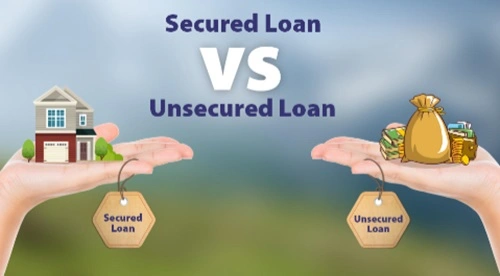When it comes to borrowing money, the choice between secured and unsecured loans often depends on a borrower’s financial situation and the purpose of the loan. Among secured loan options, a Loan Against Property (LAP) stands out as one of the most versatile and cost-effective choices. But what exactly makes a LAP more appealing compared to unsecured loans like personal loans? Let’s break it down.

Understanding Secured and Unsecured Loans
Secured Loans require collateral to secure the loan. The borrower pledges an asset, such as property, gold, or a vehicle, to the lender as security. If the borrower defaults, the lender has the right to seize the collateral to recover the loan amount. Examples of secured loans include home loans, car loans, and Loan Against Property.
Unsecured Loans, on the other hand, do not require any collateral. These loans are granted based on the borrower’s creditworthiness, income, and repayment capacity. Common examples include personal loans, credit card loans, and student loans. While unsecured loans offer convenience, they often come with higher interest rates and lower loan amounts.
What is a Loan Against Property (LAP)?
A Loan Against Property is a secured loan where the borrower pledges their residential, commercial, or industrial property as collateral to avail of funds. The loan amount is typically a percentage of the property’s market value, ranging from 50% to 80%, depending on the lender’s policies.
Benefits of Choosing a Loan Against Property
1. Lower Interest Rates
One of the most significant advantages of LAP over unsecured loans is the lower interest rate. Since the loan is secured by property, lenders face reduced risk, allowing them to offer competitive interest rates. This makes LAP an economical choice for large financial requirements.
2. Higher Loan Amount
Lenders are generally willing to sanction higher loan amounts for LAP compared to unsecured loans. The amount depends on the property’s value and the borrower’s repayment capacity, making it an ideal option for significant expenses like funding a business, higher education, or medical emergencies.
3. Flexible Repayment Tenure
LAP offers longer repayment tenures, often ranging from 10 to 20 years. This flexibility reduces the EMI burden on the borrower, making it easier to manage monthly finances without straining other financial commitments.
4. Multi-Purpose Usage
Unlike home loans, which are restricted to property purchases, LAP funds can be used for various purposes. Whether it’s expanding your business, funding a wedding, or consolidating debt, LAP provides financial freedom to use the funds as needed.
5. Retain Ownership of the Property
Although the property is pledged as collateral, the ownership remains with the borrower. Once the loan is fully repaid, the property is released from the lien, allowing the borrower to regain full control.
Why Not an Unsecured Loan?
While unsecured loans like personal loans are quick and easy to access, they have their downsides:
High Interest Rates: Without collateral, lenders charge higher interest rates to offset the risk, making unsecured loans expensive in the long run.
Shorter Tenures: Unsecured loans generally have shorter repayment periods, leading to higher EMI amounts.
Lower Loan Amounts: The absence of security limits the loan amount, which might not be sufficient for larger financial needs.
Stricter Eligibility Criteria: Lenders rely heavily on credit scores and income levels for unsecured loans, making it challenging for individuals with moderate credit scores to qualify.
When Should You Opt for a Loan Against Property?
A LAP is a suitable choice in the following scenarios:
Large Financial Requirements: LAP is an excellent option if you need a substantial loan amount, such as for business expansion or purchasing expensive equipment.
Long-Term Financial Planning: With longer tenures and lower EMIs, LAP is ideal for borrowers who prefer manageable monthly payments.
Leveraging Property Value: If you own property and want to unlock its value without selling it, LAP allows you to access funds while retaining ownership.
Debt Consolidation: LAP can be used to consolidate high-interest debts into a single, more affordable loan.
Factors to Consider Before Choosing a Loan Against Property
Loan-to-Value (LTV) Ratio: Understand how much of your property’s value the lender is willing to offer as a loan. Typically, it ranges from 50% to 80%.
Interest Rates and Fees: Compare interest rates and processing fees across lenders to find the most cost-effective option.
Repayment Capacity: Assess your financial situation to ensure you can comfortably repay the loan within the stipulated tenure.
Property Valuation: Ensure your property’s documentation is in order and that it is free from legal disputes to avoid delays in loan approval.
Conclusion
When comparing secured and unsecured loans, a Loan Against Property emerges as a clear winner for borrowers with substantial financial requirements and property to pledge. The lower interest rates, higher loan amounts, and flexible repayment options make LAP a cost-effective and versatile choice. While unsecured loans may seem convenient, their higher costs and stricter eligibility criteria often make them less appealing for larger, long-term financial needs.
If you’re looking for a loan that offers both affordability and flexibility, Loan Against Property is a smart option to consider. By leveraging the value of your property, you can unlock financial opportunities while retaining ownership, making it a win-win solution for borrowers.